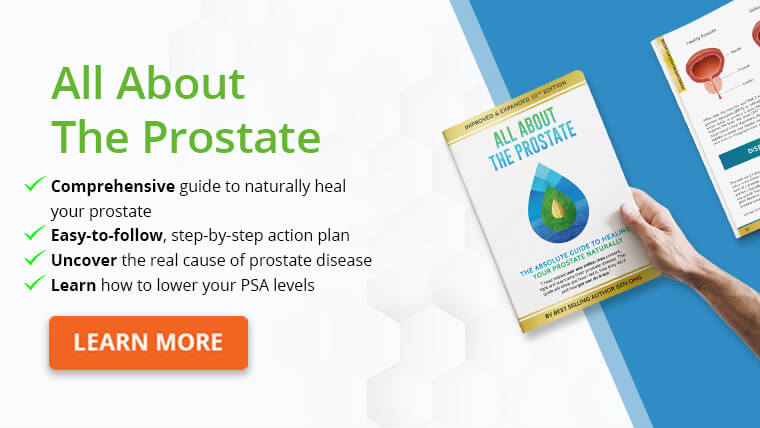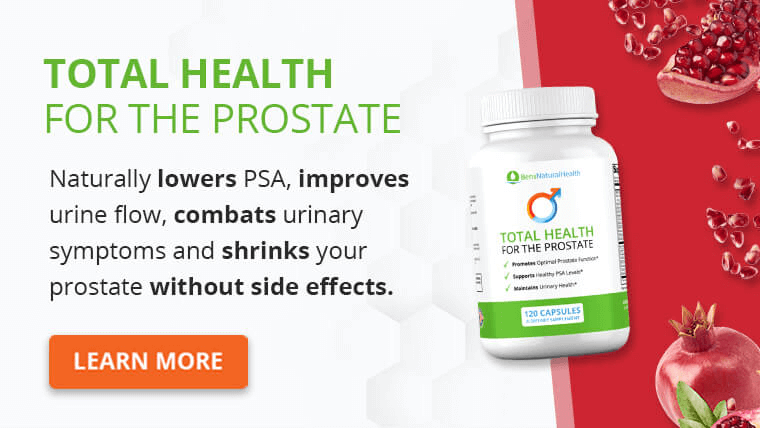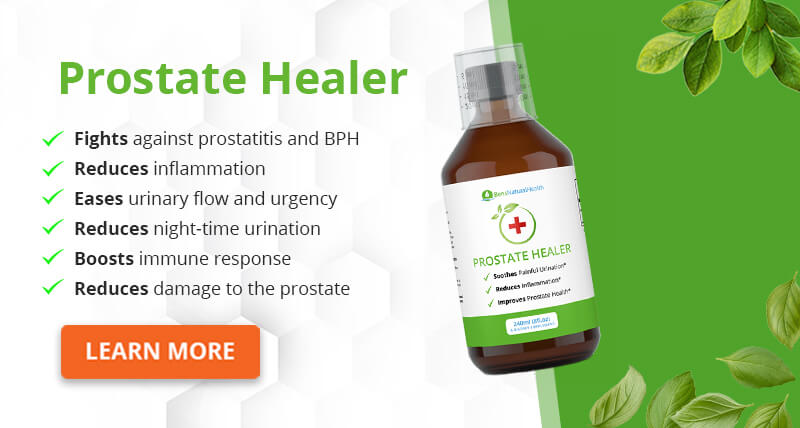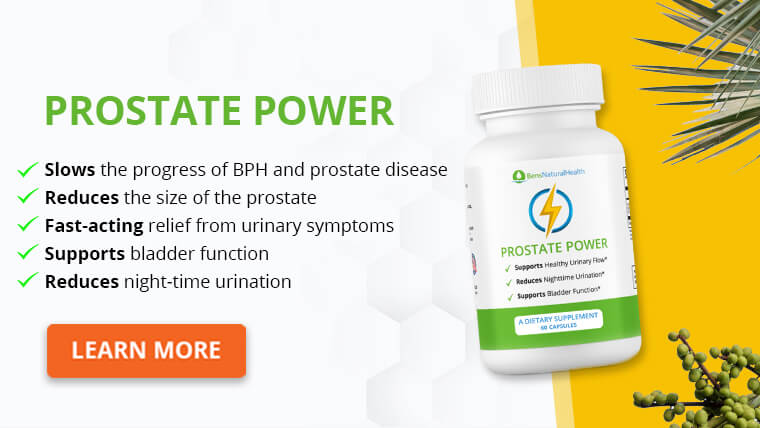- Q: What is a Prostate Massage?
- Q: What are the Different Types of Prostate Massage?
- Q: What are the Benefits of a Prostate Massage?
- Q: What are the Risks of a Prostate Massage?
- Q: How Should I Prepare for a Prostate Massage?
- Top Patient Concerns about Prostate Massage Therapy
- Conclusion
- Our Medical Review Process
- Our Editorial Guidelines
- Medical Disclaimer
- Source
If you’ve ever had questions about prostate massage therapy, you’re not alone. While the topic might seem unfamiliar or even intimidating, understanding its potential benefits and risks is important for those interested in prostate health.
Historically, prostate massage was associated with discomfort in older men, but today, it’s being explored for its therapeutic effects. Some believe it may help with prostate-related conditions, although research is still limited.
To shed light on this practice, we spoke with Dr. Kelepurovski, a medical expert specializing in prostate health. In this interview, Dr. Kelepurovski explains the potential benefits, risks, and practical considerations of prostate massage therapy. He also provides insight into how it has evolved and whether it can be a useful part of prostate care.
Q: What is a Prostate Massage?
Dr. Kelepurovski answers: Prostate massage is a therapeutic technique that involves stimulating the prostate gland to help express prostatic fluid. The prostate is a small gland located between the bladder and the penis, responsible for secreting fluids that support sperm health.
This procedure is often performed for medical reasons, particularly to assist with prostate-related conditions like inflammation (prostatitis). However, it should always be done by a trained professional in a medical or therapeutic setting to ensure safety.

Q: What are the Different Types of Prostate Massage?
Dr. Kelepurovski answers: The Royal Institute of Massage in Stockholm introduced prostatic massage in the late 1890s. But, the treatment has dramatically improved since then.
There are several types of prostate massage, each with its own approach and purpose:
- Regular Prostate Massage: This is performed manually or with specialized devices to support prostate health. It is often used to relieve discomfort associated with prostate issues. Some men may experience mild sensitivity or discomfort following the procedure due to fluid release.
- External Prostate Massage: This involves applying pressure to the perineum (the area between the scrotum and anus). Stimulating this region may help promote prostatic fluid drainage and relieve discomfort.
- Abdominal Prostate Massage: This technique focuses on a point between the belly button and pubic bone that connects to the prostate. Gentle massage in this area may support circulation and relaxation.
Q: What are the Benefits of a Prostate Massage?
Dr. Kelepurovski answers: Although research on prostate massage is limited, some findings suggest potential benefits:
- Clearing the Prostatic Duct: Prostate massage may help clear the ducts that connect the prostate to the urinary and reproductive systems, which could be useful for managing chronic prostatitis.
- Fluid Secretion: Prostate stimulation can trigger the secretion of prostate fluid, which may assist in clearing the duct and relieving discomfort.
- Symptom Reduction: Some patients in clinical studies have reported relief from symptoms associated with prostate conditions when combining prostate massage with other treatments.
- Benign Prostatic Hyperplasia (BPH) Support: Some believe that prostate massage might help reduce swelling and fluid buildup linked to an enlarged prostate, but this should always be discussed with a doctor.
Enhanced Sexual Stimulation: Due to the proximity of the prostate to the rectal wall, prostate massage can heighten sexual stimulation for some individuals. However, this is a personal preference and not a primary medical benefit.

Q: What are the Risks of a Prostate Massage?
Dr. Kelepurovski answers: While prostate massage can be beneficial in certain cases, there are risks to consider, particularly if you don’t know how to massage prostate correctly. The prostate and surrounding tissues are delicate, making it important to proceed with caution.
Potential risks include:
- Prostate Bleeding: The gland’s delicate tissues can be damaged if the massage is too aggressive.
- Prostate Discomfort: Improper or forceful massage techniques can cause discomfort or pain in the prostate area.
- Skin Infections: If hygiene is not maintained, bacteria can enter the body, increasing the risk of infection.
- Rectal Lining Damage: Aggressive massage can cause small tears or abrasions in the rectal lining.
- Aggravated Prostatitis Symptoms: Those with chronic prostatitis may experience worsened inflammation or discomfort.
- Hemorrhoid Flare-Ups: Individuals with hemorrhoids may find that prostate massage exacerbates their condition.
It’s also important to note that prostate massage is not recommended for individuals with acute bacterial prostatitis, as it may cause bacterial spread and worsen the infection. Additionally, electronic prostate massagers should be used cautiously and according to manufacturer guidelines to minimize risks.if they have concerns about prostate health or are considering prostate massage.
Q: What Type of Health Issues Can Prostate Massage Therapy Help with?
Dr. Kelepurovski answers: While there is still limited research, prostate massage has been explored as a potential complementary therapy for certain prostate-related issues, including:
- Erectile Dysfunction (ED): Historically, prostate massage was used as a method to stimulate blood flow before modern medications were available. Some men still prefer it over pharmaceutical treatments.
- Pain During Ejaculation: If fluid blockages cause discomfort during ejaculation, massage may help restore proper fluid flow and relieve pain.
- Poor Urinary Flow: Swelling or inflammation of the prostate can obstruct the urethra, making urination difficult. Prostate massage has been suggested as a way to ease swelling and improve urine flow, though medical advice is necessary before trying this.
- Prostatitis: Prostate massage was historically employed as a strategy for managing chronic prostatitis when antibiotic therapy was not readily available. Today, advancements in medical knowledge and treatments have enhanced our understanding of prostatitis, leading to more specialized and effective treatment approaches. While prostate massage may have been used in the past, consulting with a healthcare professional is essential to determine the most suitable treatment for prostatitis.

Q: Can I Use Prostate Massage to Treat Infections?
Dr. Kelepurovski answers: There is no solid evidence that prostate massage can effectively treat infections. While some believe it may help relieve symptoms, medical treatment—typically with antibiotics—is the most reliable approach. If you suspect a prostate infection, it’s best to consult a healthcare professional.
Q: Do I Have to See a Specialist, or Can I Do the Massage Myself?
Dr. Kelepurovski answers: Seeing a specialist is always the safest option, especially if you are experiencing pain, difficulty urinating, or other symptoms. A medical professional can assess your condition and determine whether prostate massage is appropriate for you.
Some individuals choose to perform prostate massage at home, particularly for sexual stimulation. If you attempt self-massage, using a specialized prostate massager designed for safety is essential. However, proper technique and hygiene must be maintained to avoid injury or infection.
Q: How Should I Prepare for a Prostate Massage?
Dr. Kelepurovski answers: If you are undergoing a professional prostate massage, your healthcare provider will guide you through the preparation steps. Generally, this includes ensuring the rectal area is clean and relaxed.
For at-home massage, it’s important to:
- Wash your hands and any tools you plan to use to prevent bacterial infections.
- Use lubrication to minimize discomfort and reduce the risk of tissue damage.
- Relax the muscles to make the process more comfortable.
Q: How does a prostate massage feel?
Dr. Kelepurovski answers: The massage therapy is somewhat similar to the digital rectal exam (DRE). Urologists may use DREs when necessary to examine the prostate for potential health issues, including the detection of lumps or signs of prostate cancer in specific cases. Additionally, a doctor may perform a prostate biopsy to investigate signs of infection, prostatitis, or other health disorders, involving the collection of a sample from the prostate gland.
During the massage, the doctor will use a glove and apply lubricant to their finger. They will gently insert their finger into the patient’s rectum and apply gentle pressure to stimulate the prostate for a few minutes.
If you experience any discomfort or pain during the procedure, it is important to inform the doctor while they are performing the treatment. However, it’s important to know that while some individuals may feel slightly uncomfortable, the procedure is not meant to be painful.
The frequency of prostate massage sessions should be based on your specific needs and preferences. For individuals dealing with conditions like erectile dysfunction (ED) or prostatitis, it may be beneficial to consider multiple sessions per week for at least one month. After experiencing relief from symptoms, you can adjust the frequency of these sessions according to your ongoing requirements.
Q: Why do men do prostate massage?
Dr. Kelepurovski answers: The prostate gland is a highly sensitive part of the male anatomy with various potential benefits. Some people refer to the practice of massaging the prostate as ‘prostate milking.’ This technique, often combined with penile stimulation, can provide unique sensations and, for some individuals, lead to a powerful release of pleasure.
Because the prostate plays an essential role in the production of seminal fluid, prostate milking can intensify the sensation of orgasm. However, it’s worth noting that some individuals engage in prostate stimulation primarily for its potential medicinal properties and not exclusively for sexual pleasure.
Q: Do men get the same benefits just by taking antibiotics?
Dr. Kelepurovski answers: No. Antibiotic therapy can’t reach the clogged areas. But, when paired with prostate massage, it can promote healthy drainage, restore blood flow, and get the system back on track. However, when there isn’t enough drainage, the affected area will become a breeding ground for bacteria. So, it’s best to contact your doctor if you decide to take antibiotics to treat any prostate-related health issues.

Q: What are the Key Considerations?
Dr. Kelepurovski answers: The prostate or P-spot is a tiny muscular gland that is surrounded by countless nerve endings. When done right, it can create some amazing orgasm. But, to get those prostate induced orgasms you are hoping for, there are a couple of things you should consider first.
For example: Don’t engage in a prostate massage if the partner or you have hemorrhoids or fissures. Otherwise, you risk fracturing the hemorrhoids that can cause bleeding. This will make you vulnerable to infections.
Trim the fingernails. The longer the fingernails, the easier it is to cut, tear, or scratch the prostate.
Wash and dry the hands before the massage. Hands can carry up to 5 million bacteria, explains Harvard Medical School. The best way to avoid them is to wash your hands first.
Use a generous amount of lubricant before anal penetration. The lubricant will help you massage the prostate easier and reduce the risk of discomfort and rectal damage.
Use light douching to remove any fecal matter. This will help clean the rectum before the massage.
Get Your FREE PSA Lowering Diet Plan!
- Naturally lower PSA levels
- Reduce nighttime trips to the bathroom
- Enjoy better bladder control and urine flow
Top Patient Concerns about Prostate Massage Therapy
Q: Can prostate massage help with bladder control issues?
Dr. Kelepurovski answers: Bladder control is not immediately enhanced by prostate massage. It might, however, be advantageous in certain situations where prostatitis or an enlarged prostate (benign prostatic hyperplasia, or BPH) causes problems with urination. urine retention, partial bladder emptying, and urine hesitancy may be lessened with prostate massage by lowering inflammation and enhancing prostatic fluid evacuation. Prostatic massage may help treat chronic prostatitis/chronic pelvic pain syndrome (CP/CPPS) as part of a multimodal treatment strategy, according to studies.
Q: Does prostate massage increase PSA levels?
Dr. Kelepurovski answers: Indeed, after receiving a prostate massage, there may be a brief increase in PSA readings. This happens because PSA, a protein made by prostate cells, can be released into the bloodstream when the prostate is mechanically stimulated. Prostate massage, digital rectal examination (DRE), and ejaculation have been shown to increase PSA levels for up to 48 hours.
To guarantee reliable findings, it is recommended that you refrain from prostate massage, sexual activity, or any other prostate-stimulating treatments for at least 48 hours before to your planned PSA test. To rule out diseases like prostatitis, BPH, or prostate cancer, more testing might be required if PSA levels are consistently high.
Q: Can prostate massage impact the microbiome of the male reproductive system?
Dr. Kelepurovski answers: Maybe. The microbiome of the male reproductive system is complicated and contains both potentially hazardous and helpful microbes. Prostate infections like bacterial prostatitis can result from improperly conducted prostate massages that use excessive force or non-sterile methods.
According to studies, some bacterial species are frequently linked to prostatitis, such as Escherichia coli, Enterococcus faecalis, and Klebsiella pneumoniae. There is very little chance of upsetting the microbiota or causing infections when done under medical supervision or with good cleanliness.
Periodic prostatic draining under aseptic circumstances has been proposed as a supportive treatment to reduce symptoms in people with chronic prostatitis; however, further study is required to develop precise guidelines.
Q: Can overuse of prostate massage contribute to nerve desensitization or receptor downregulation?
Dr. Kelepurovski answers: Prostate massage does not appear to cause receptor downregulation or irreversible nerve desensitization, according to solid scientific data. However, overstimulating the prostate, especially with too much power or frequency, can cause short-term discomfort or a reduction in sensitivity.
Due to the abundance of sensory nerve terminals in the prostate, overstimulation may irritate or slightly inflame them, causing temporary alterations in feeling. It is best to utilize appropriate techniques and exercise moderation to prevent any negative consequences, preferably with professional assistance if there are medical issues.
Q: Can prostate massage serve as a diagnostic tool for assessing prostate elasticity, fibrosis, or nodularity?
Dr. Kelepurovski answers: To a certain degree, yes. Doctors evaluate the prostate’s size, stiffness, flexibility, and nodule presence during a digital rectal exam (DRE). These results aid in the diagnosis of diseases such prostate cancer, prostatitis, and BPH. Prostate massage is not a replacement for thorough diagnostic procedures like PSA tests, prostate MRIs, or biopsies, even though it can assist in evaluating some aspects of prostate health.
To rule out cancer, additional testing using imaging (MRI) and biopsy may be required if nodules, asymmetry, or increased stiffness are found during a DRE.
Conclusion
Prostate massage therapy is a well-known tactic for its potent therapeutic and medical properties. It can help men achieve excellent sexual arousal and manage some prostate-related health complications. But, to reap the benefits of a massage like this, you will need to be extra careful.
The rectum is a delicate area that requires gentle pressure and plenty of lubrication. If you want to learn the technique, it’s best to book a medical massage first and then start using the massage by yourself. With gentle pressure and gentle massage, anyone can stimulate this highly erogenous zone.
Don’t forget to consult with a doctor if you plan to try it out to alleviate prostate disorders. You must contact your doctor to ensure that the massage is the best way to manage the issue.
Our Medical Review Process
At Ben’s Natural Health, we are committed to maintaining the highest standards of accuracy, transparency, and scientific integrity. Every piece of content is carefully developed by medical professionals and undergoes a thorough review every 12 to 24 months. This ensures that our information remains current, reliable, and rooted in credible, evidence-based research. We reference only peer-reviewed studies from reputable medical journals, providing full citations and direct links to enhance trust and confidence. Learn more about our medical review process and research standards.
Our Editorial Guidelines
For over 25 years, Ben’s Natural Health has been a trusted source of scientifically backed, reliable health information. Our editorial guidelines uphold the highest quality and integrity for every article we publish. Each piece is written by qualified experts—including doctors, dietitians, nutritionists, fitness specialists, and surgeons—and undergoes independent quality checks. We prioritize transparency by clearly displaying contributor credentials and biographies at the beginning of every article. Read our editorial guidelines to understand how we ensure the accuracy and credibility of our content.
Medical Disclaimer
The content on this blog is for informational purposes only and should not be considered a substitute for professional medical advice, diagnosis, or treatment. While our articles are authored and reviewed by licensed medical professionals, they may not address your specific health concerns. Always consult a qualified healthcare provider before making any medical decisions. Never disregard or delay seeking professional medical advice based on the information provided here. Your use of this blog and its content is entirely at your own risk.







